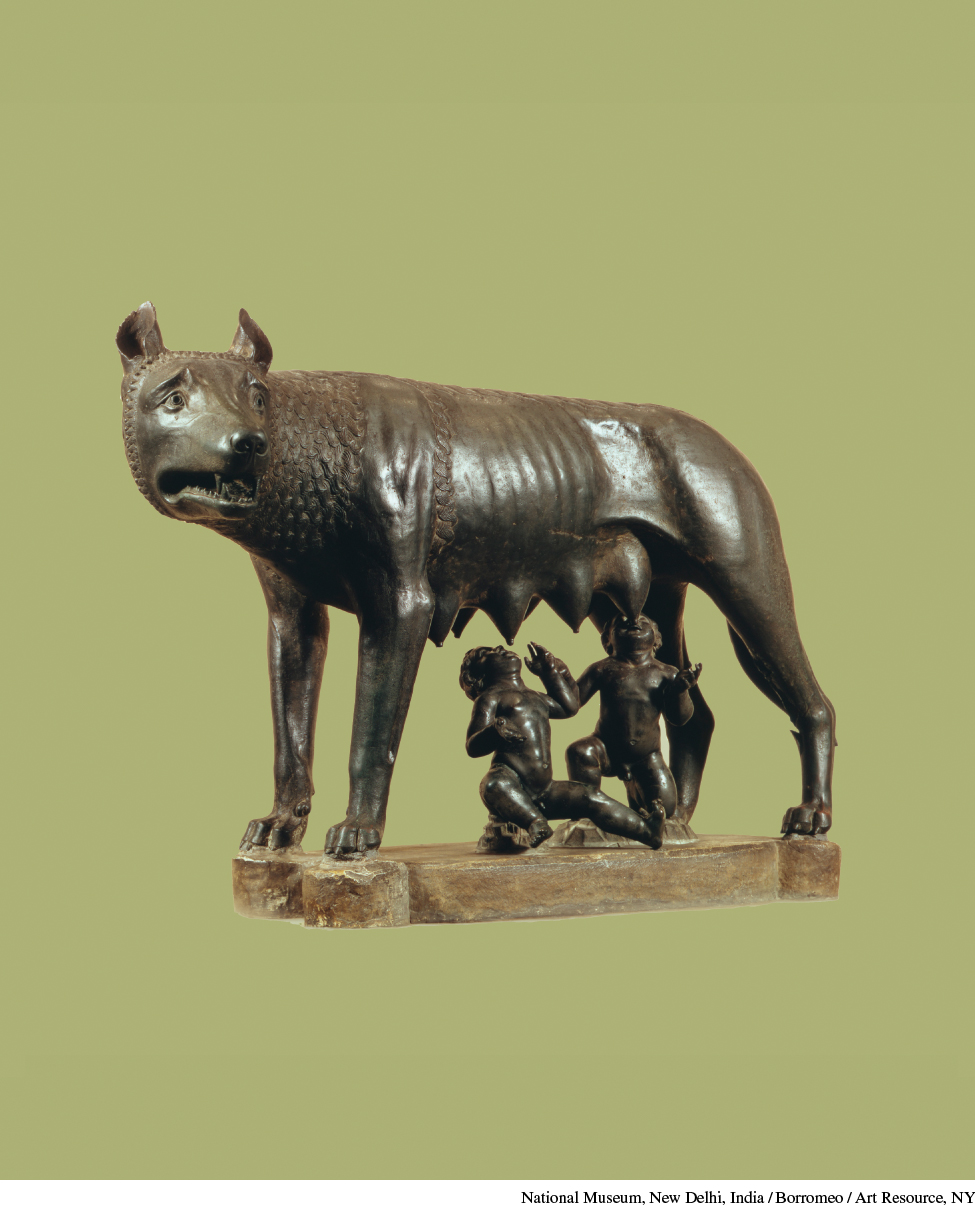Introduction for Chapter 5

THE ROMANS TREASURED LEGENDS about their state’s transformation from a tiny village to a world power. They especially loved stories about their city’s legendary first king, Romulus. When early Rome needed more women to bear children to increase its population and build a strong army, Romulus begged Rome’s neighbors for permission for its men to marry their women. Everyone turned him down, mocking Rome’s poverty and weakness. Enraged, Romulus hatched a plan to use force where diplomacy had failed. Inviting the neighboring Sabines to a religious festival, he had his men kidnap the unmarried women who attended. The Roman kidnappers immediately married these Sabines, promising to cherish them as beloved wives and new citizens. When the Sabine men attacked Rome to rescue their kin, the women rushed into the midst of the bloody battle, begging their brothers, fathers, and new husbands either to stop slaughtering one another or to kill them—their devoted sisters, daughters, and wives—to end the war. The men on both sides made peace on the spot and agreed to merge their populations under Roman rule.
This legend emphasizes that Rome, unlike the city-states of Greece, expanded by absorbing outsiders into its citizen body. Rome’s growth was the ancient world’s greatest expansion of population and territory, as a people originally housed in a few huts gradually created a state that fought countless wars and relocated an unprecedented number of citizens to gain control of most of Europe, North Africa, Egypt, and the eastern Mediterranean region. The social, cultural, political, legal, and economic traditions that Romans developed to rule this vast area created greater connections between diverse peoples than had ever existed before. Unlike the Greeks and Macedonians, the Romans maintained the unity of their state for centuries. The empire’s long existence allowed many Roman values and traditions to become essential components of Western civilization.
Greek literature, art, and philosophy influenced Rome’s culture greatly. Romans learned from their neighbors, adapting foreign traditions to their own purposes and forging their own cultural identity.
The legend about Romulus belongs to Rome’s earliest history, when kings ruled (753–509 B.C.E.). Rome’s later history is divided into the republic and the empire. Under the republic (founded 509 B.C.E.), male citizens elected government officials and passed laws (although an oligarchy of the social elite controlled politics). Under the empire, monarchs once again ruled. Rome’s greatest expansion came during the republic. Romans’ belief in a divine destiny fueled this tremendous growth. They believed that the gods wanted them to rule the world and improve it by making everyone adhere to their social and moral values.
CHAPTER FOCUS How did traditional Roman values affect both the rise and the downfall of the Roman republic?
Roman values emphasized family loyalty, selfless political and military service to the community, individual honor and public status, the importance of the law, and shared decision making. By the first century B.C.E., power-hungry leaders such as Sulla and Julius Caesar had plunged Rome into civil war. By putting their personal ambition before the good of the state, they destroyed the republic.